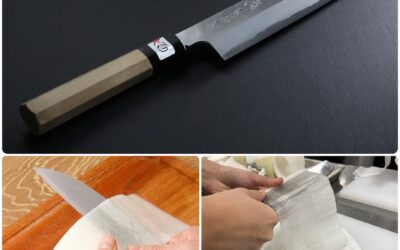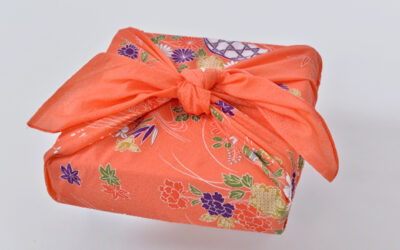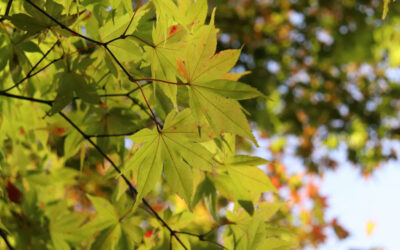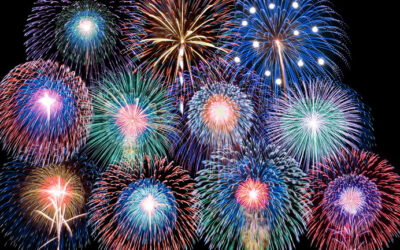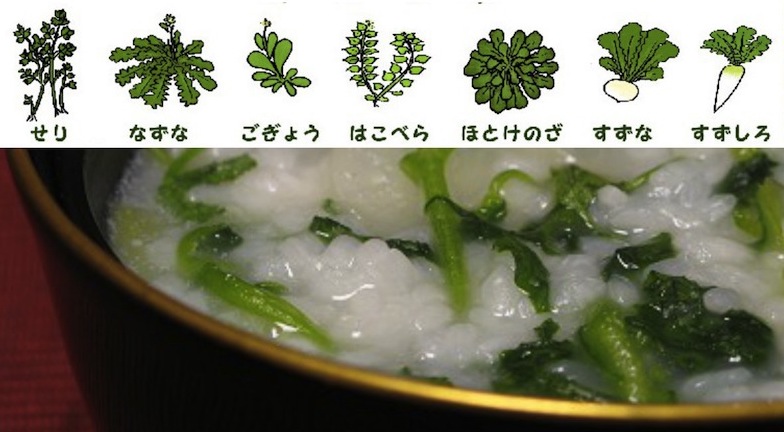
From left to right, the seven spring herbs are: SERI, NAZUNA, GOGYŌ, HAKOBERA, HOTOKÉNOZA, SUZUNA, SUZUSHIRO
七草粥
Nana Kusa Kayu
Rice Porridge with Seven Spring Herbs
More than a thousand years ago, the Japanese spoke of watari-dori (“migrating birds”) coming from the Asian mainland in wintertime bringing with them unwanted viruses – early evidence of avian flu epidemics! Eating nutritious nana (seven) kusa (grasses) kayu (porridge) on the 7th day of the New Year was believed to strengthen resistance to infection and colds.
Indeed the seven “grasses” traditionally cooked into rice porridge are vitamin and mineral rich leafy herbs and flowering greens.
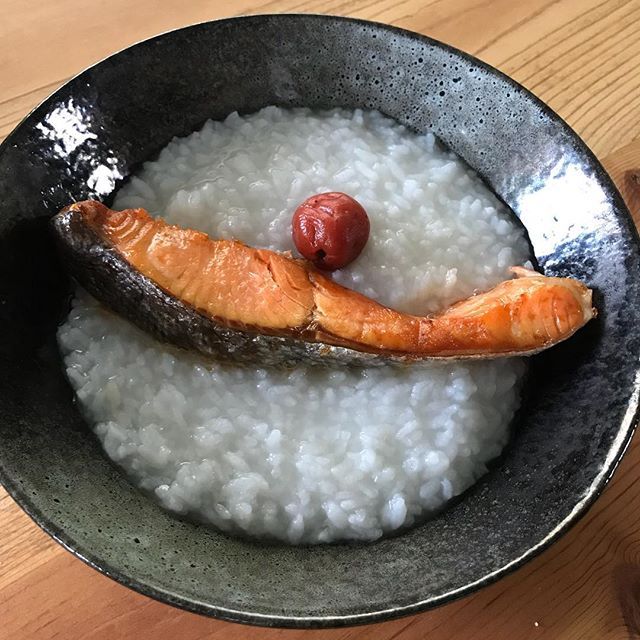
Variations on the theme… Topping bowls of okayu with broiled salmon and/or uméboshi plums are both popular variations on the rice porridge theme. The saltiness of either, or both, eliminates the need for any salt in seasoning the porridge.
Try making your own OKAYU: Download a recipe-guide for Nana Kusa-Gayu

